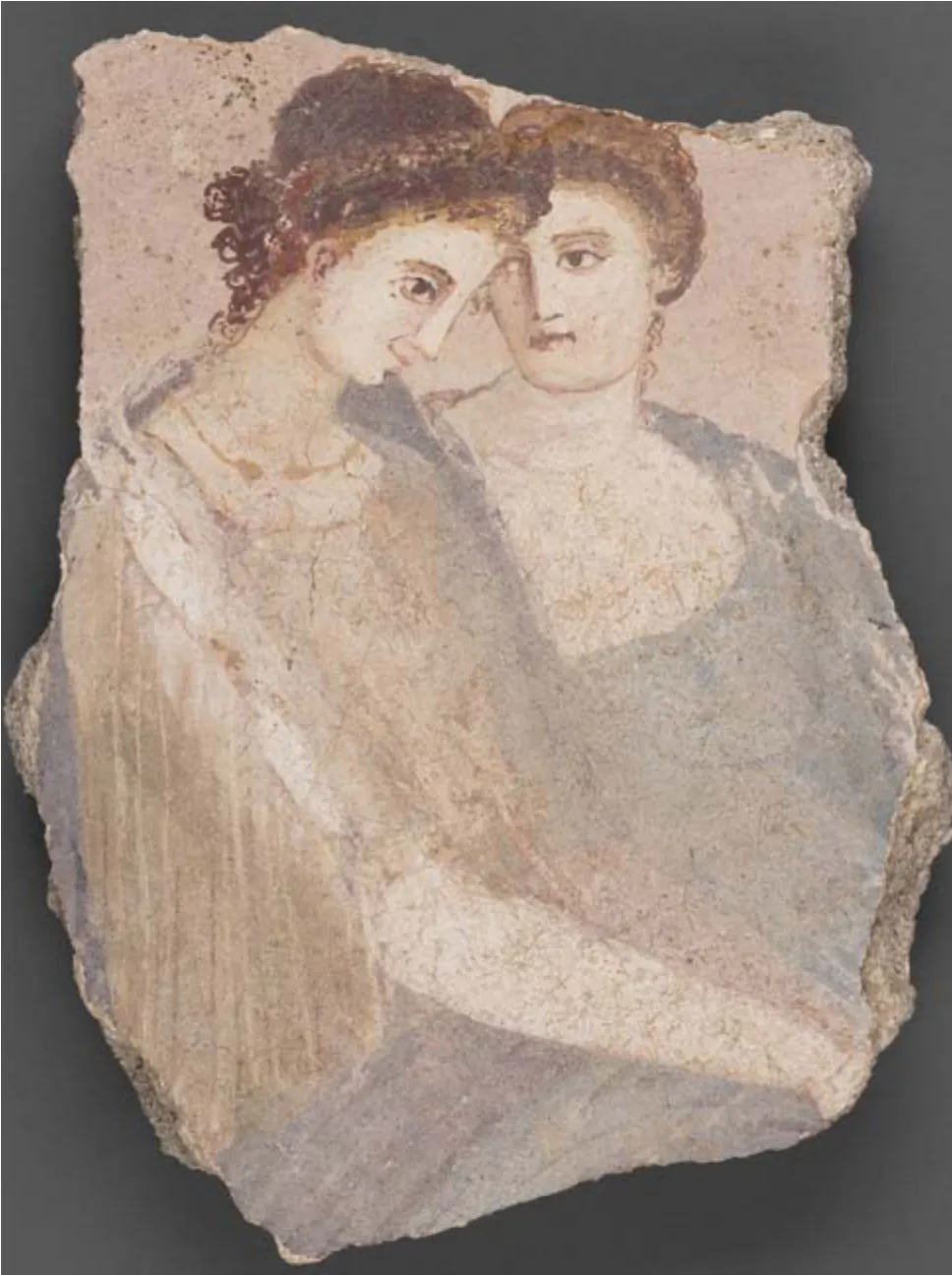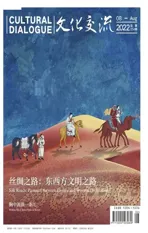始于中国 属于世界
——与联合国教科文组织共同出品文化互动专题集
2022-08-26李晋芳
文/李晋芳

2022年7月8日,《丝绸之路上的文化互动专题集:纺织与服装》(英文版)在“2022 丝绸之路周”开幕式上亮相。Thematic Collection of the Cultural Exchanges along the Silk Roads:Textiles and Clothing (English edition) is unveiled at the opening ceremony of the 2022 Silk Road Week on July 8, 2022.
丝路,以丝绸织就。千万卷如蝉翼般的丝布形成一张宏伟画卷,展现的是纺织品的演变流传,更是华夏文化与异域文化的浪漫碰撞。关于纺织,丝绸之路在历史长河中存放了太多记忆。如今,有一本书再现丝绸之路上的人类文明故事,为读者讲述丝绸之路上的文化交流互动互鉴的轶事。
2022年7月8日,第三届“丝绸之路周”拉开序幕,由联合国教科文组织和中国丝绸博物馆共同出品的《丝绸之路上的文化互动专题集:纺织与服装》(英文版)即将出版这一消息正式公布。
丝路华彩难掩,众多知名学者都加入了该书的编撰:中国丝绸博物馆名誉馆长赵丰和丹麦皇家科学与文学学院院长玛丽-路易斯 · 诺施(Marie-Louise Nosch)担任总主编,英国著名历史学家、《丝绸之路:一部全新的世界史》作者彼得 · 弗兰科潘(Peter Frankopan)为此作序。并且,如彼得所说,“跟随作者指引,读者将被带往地球的不同角落—从爪哇到西非,从斯堪的纳维亚到菲律宾”,它将让人感受到丝绸之路“始于中国,属于世界”的独特魅力。
“丝绸之路上的文化互动专题集”系列丛书,是联合国教科文组织策划已久的项目。2017年5月31日,联合国教科文组织在北京召开“一带一路文化互动地图”国际专家会议,共选定哲学、建筑、农业、语言和文学、医学等18个主题,希望针对每个主题出版一本书,从而全面阐释这些要素在丝绸之路上的脉络。时任中国丝绸博物馆馆长的赵丰曾被邀请前去参加会议。会议上一致认为,这一互动地图应该选择丝绸作为前期试点项目。于是,2019年3月18日至19日期间,在西班牙瓦伦西亚召开了“丝绸纺织服饰”部分的专题会议。2019年3月之后,决定合作以出版的形式开启第一个主题,体现纺织服饰在人类历史尤其是丝绸之路发展过程中浓墨重彩的一笔。
项目开启后,联合国教科文组织便选定中国丝绸博物馆作为合作出版方。一方面,丛书的主要负责部门“丝绸之路项目”与中国丝绸博物馆多年来保持紧密合作;更重要的是,中国丝绸博物馆作为全球最大的丝绸专题博物馆,与全球其他纺织类博物馆、综合博物馆的纺织品部门、其他科研机构都开展过具体的纺织品合作。在2020年4月,联合国教科文组织与中国丝绸博物馆正式签署了合作出版协议。
双方对于这本书的定位十分清晰,力求“专、广、浅”。“专”,是指这本书要达到顶尖的专业水平,要汇集全球各区域顶尖纺织品领域专家的研究成果,聚焦于丝绸之路。“广”,是指所涉领域广博浩瀚,沿丝路溯纺织品类,探古今中外。就如彼得在序中所介绍的,“读者不仅可以了解丝绸这种高档丝织品,还可源源不断地了解其他纺织品和织物,包括棉花、羊毛及植物性材料,如亚麻、大麻、苎麻和其他韧皮纤维”,“图案、染料和服装的时新式样是如何成为相互借鉴、影响和交流的重要元素”,乃至“何时、何地选用特定的设计和图案,以及设计和图案在新环境中的演变过程”等。“浅”,则指本书作为通识类书籍,需要深入浅出,专业而不晦涩。
在选择作者时,考虑地域的分布性等因素,联合国教科文组织与中国丝绸博物馆特邀丹麦皇家科学与文学学院院长玛丽-路易斯 · 诺施担任另一位总主编,她是丹麦哥本哈根大学的世界古代史教授,曾担任多部纺织品考古书籍的总主编,与另一位总主编赵丰馆长是多年好友。

壁画,绘有两位年轻罗马女性身穿衣料透明轻薄的服装(罗马,公元1—75年)。现藏于洛杉矶保罗·盖蒂博物馆。(图片来源:盖蒂开放内容项目)Frescoes of two young Roman women dressed in light garments (Rome, AD 1-75),collected at the J. Paul Getty Museum in Los Angeles. Photo credit: Open Content Program, J. Paul Getty Museum.
《丝绸之路上的文化互动专题集:纺织与服装》分为5个部分,分别聚焦纺织品生产中的材料、技术、图案、社会角色和交流;所收录的22篇文章则邀请了来自丹麦、俄罗斯、英国、美国、加拿大、意大利、韩国、印度、日本、埃及、加纳、中国等15个国家的30位纺织服装领域作家,从不同角度解读、阐释丝绸之路上纺织材料、技术、图案、艺术、文化、功能性的发展历程及沿线的交流。
其中有著名的乔吉奥 · 列略,他是英国华威大学世界历史与文化教授,是《棉的全球史》的原文作者,还有来自加拿大多伦多皇家安大略博物馆的策展人莎拉 · 菲、大英博物馆的策展人汪海岚,有意大利比萨大学亚洲史克劳迪奥·扎尼尔教授,有埃及开罗伊斯兰艺术博物馆的副馆长穆罕默德 · 阿布都-萨拉姆,有牛津大学古代艺术学教授彼得·斯图尔特等。
众多作者专业且配合积极。写作期间(2020年底—2021年)正值新冠病毒在欧美肆虐之时,在欧洲地区的一些作家受到了很大影响。其中在伦敦的桑树专家彼得 · 寇斯曾告诉我,他的作者合同要晚些才能交,由于他和他的家人感染新冠,目前只能在家隔离,无法出去打印文章。所幸之后他们都得以痊愈。在意大利的史克劳迪奥·扎尼尔教授和他夫人曾经告诉我,在一段时间内无法通过邮件联系上他们,因为他们年纪比较大,在城市里居住感染病毒的风险比较大,因此他们搬去了没有网络的乡下。我说没关系,我有事情会发邮件,你们有网络了回复我就可以。最后,他们都尽力排除万难,为这本书的完成作出了不可替代的贡献。
2.明确区县民宗侨台等部门合署办公的具体规定。厘清区县党委统战部与民族宗教部门、台办、侨办、外办、侨联等合署办公的职责职能,对机构设置、人员配备包括部门归属、科室设置、人员职数等作出具体规定。在区县民族宗教部门同统战部合署办公后,应明确将民族宗教部门保留在政府序列,并配足执法人员,确保其执法资格不受影响。
读者们还可以注意到本书的另外一个特点,就是插图精美丰富。这也是主编们和联合国主管对于这一项目的要求,涉及到纺织品和服装,只有丰富清晰的图片才令人信服,因此要求每位作者必须配5至10张图,并且尽量自己解决版权问题。虽然图片版权的申请极其繁琐,但所有的作者和主编都在共同努力,帮助解决。其中曾经遇到过一些图片无法获取授权的情况,作者们也都非常积极地想办法去更换图片。
参考文献编写中的一个“小插曲”也令我印象深刻。按照联合国教科文组织出版物的规定,参考文献中只出现作者的姓,省略名字。因此,联合国教科文组织的审校团队在审校过程中把原来作者的名字都删除了,只保留了姓。但作为总主编之一的玛丽-路易斯 · 诺施很快发现了问题,并提出,女性作者在纺织品研究领域的学术地位是非常重要的,如若省略名字只保留姓,那就无法直观地体现这一点。后来针对这个问题,我们专门跟联合国教科文组织的出版部进行商讨,最终决定在这本书里做一个特例—保留作者的名字。虽然这只是一个细节,但却能够体现出来一位女性学者对于学术的严谨、对于争取女性研究人员地位的态度。
彼得 · 弗兰科潘说:“总体而言,本卷是丝绸之路上一切事物的见证,更凝练了世界各地博物馆、机构及研究中心的一流学术成果。”正如联合国教科文组织社会和人文科学部助理总干事加布里埃拉·拉莫斯(Gabriela Ramos)在前言中提到的:“希望这本引人入胜的书能够成为专家和普通读者的宝贵资源。本书将进一步加深我们对纺织与服装这一重要主题的理解,并有助于实现专题集更远大的目标,即加强我们对这些文化交流及其当代遗产的共识。”

明黄地五彩云龙妆花缎(17—19 世纪)。现藏于中国丝绸博物馆。Bright yellow multi-colored cloud dragon pattern satin (17-19 centuries),collected at the China National Silk Museum.
Born in China, Belongs to the World
By Li Jinfang
The Silk Roads have been woven with silks. Thousands of rolls of silk cloth like cicada wings form a magnificent picture scroll, showing the evolution and spread of textiles, but also the romantic encounters between Chinese and foreign cultures. The Silk Roads contain too many memories in the long history about textiles. Now, a book reproduces the stories of human civilization along the Silk Roads, and readers can now read the anecdotes of cultural exchanges and mutual learning along the Silk Roads.
On July 8, 2022, with the opening of the third Silk Road Week, it was officially announced that Thematic Collection of the Cultural Exchanges along the Silk Roads: Textiles and Clothing(English edition), a volume co-produced by the UNESCO and the China National Silk Museum would soon be published.
Many renowned scholars have joined in the endeavor. Zhao Feng, honorary director of the China National Silk Museum,and Marie-Louise Nosch, president of Royal Danish Academy of Science and Letters, served as the book’s chief editors. Peter Frankopan, celebrated British historian and author of The Silk Roads: A New History of the World penned the preface for the book. As Frankopan said, “They [the contributors] will take us to different corners of the globe: from Java to West Africa, from Scandinavia to the Philippines” and the volume will lead readers to experience the unique charm of the Silk Roads, which started out in China and fanned out across the world.
The Thematic Collection of the Cultural Exchanges along the Silk Roads book series is a project that the UNESCO has long been preparing and planning. On May 31, 2017, UNESCO held an international expert conference on the “Interactive Atlas of Cultural Interactions along the Silk Roads” in Beijing. A total of 18 themes, including philosophy, architecture, agriculture,language and literature, as well as medicine, were selected, with the hope of publishing a book on each topic to fully explain the context of these elements along the Silk Roads. Zhao Feng, then director of the China National Silk Museum, was invited to the meeting, where it was agreed that “silk” should be selected as a pilot project.

2017年5月,联合国教科文组织在北京召开“一带一路文化互动地图”国际专家会议。UNESCO experts gather for the “Interactive Atlas of Cultural Interactions along the Silk Roads” conference in Beijing in May 2017.
After the project was kickstarted, the UNESCO chose the China National Silk Museum as its publishing partner. On the one hand, the UNESCO Silk Roads Program, the main department responsible for the series, has maintained close cooperation with the China National Silk Museum for many years. More importantly, as the largest silk museum in the world, the China National Silk Museum has carried out many cooperations with other textile museums, the textile departments of comprehensive museums and scientific research institutions around the world. In April 2020, the UNESCO and the China National Silk Museum officially signed a co-publishing agreement.
From the very beginning, the two sides made it very clear what the book should be like: “authoritative, broad, general”.“Authoritative” means that the book should be at the very top and bring together the research results of leading textile experts from all areas of the world, focusing on the Silk Roads. “Broad” refers to the broad and vast fields involved, tracing textile categories along the Silk Roads, exploring ancient and modern, China and overseas.As Frankopan noted in the preface, “We will learn about silk,of course, but we will also discover a seemingly endless number of other textiles and fabrics, including cotton, wool and plantbased materials, such as flax, hemp, ramie and other bast fibers.”“We will learn how patterns, dyes and fashions were important elements of imitation, influence and exchange, as well as why,when and where particular designs and motifs were adopted and how they evolved in their new settings.” “General” refers to the book being accessible to the general public, scholarly enough yet not too academic as to be obscure.
When publishing a book, the first thing to consider is its editors (authors, contributors) and content. When choosing the former, taking into account factors such as regional variation, the UNESCO and the China National Silk Museum invited Marie-Louise Nosch, president of Royal Danish Academy of Science and Letters and professor in ancient history at the University of Copenhagen, as one of the chief editors. She is the author and editor of numerous books on ancient textiles, and has been friends with her co-chief editor Zhao Feng, for many years.
It was from the end of 2020 and 2021, when COVID-19 was sweeping across Europe, when the writing took place. Some European authors were greatly affected. Peter Coles, a mulberry expert, had to hand in the agreement later than the agreed date because he and his family had caught the virus and during isolation, he couldn’t print out the copy at home. Fortunately,they all recovered.
According to the UNESCO publications guidelines, only an author’s last name should appear in a reference entry, while the first name is omitted. As a result, the editorial team removed the given names of all authors in the references in the “Further Reading” section during the review process. But Marie-Louise Nosch, the co-chief editor, quickly noted a problem: some female authors would not have their original family names shown.With the important contributions that women scholars in textile research have made, it would be counterintuitive to do so. Later,an exception was made for this book: all the authors’ full names have been kept.
As Frankopan commented, “Taken as a whole, this volume is not just a testament to the Silk Roads, it is also a look at the world class scholarly work taking place in museums, institutions and study centers around the world.” In the foreword, Gabriela Ramos, assistant director-general for social and human sciences of UNESCO, wrote, “I hope this fascinating volume will act as a valuable resource for the expert and general reader alike. It will further knowledge on this important topic and contribute to the wider goals of the Thematic Collection to deepen our collective understanding of these cultural exchanges and their contemporary legacy.”
